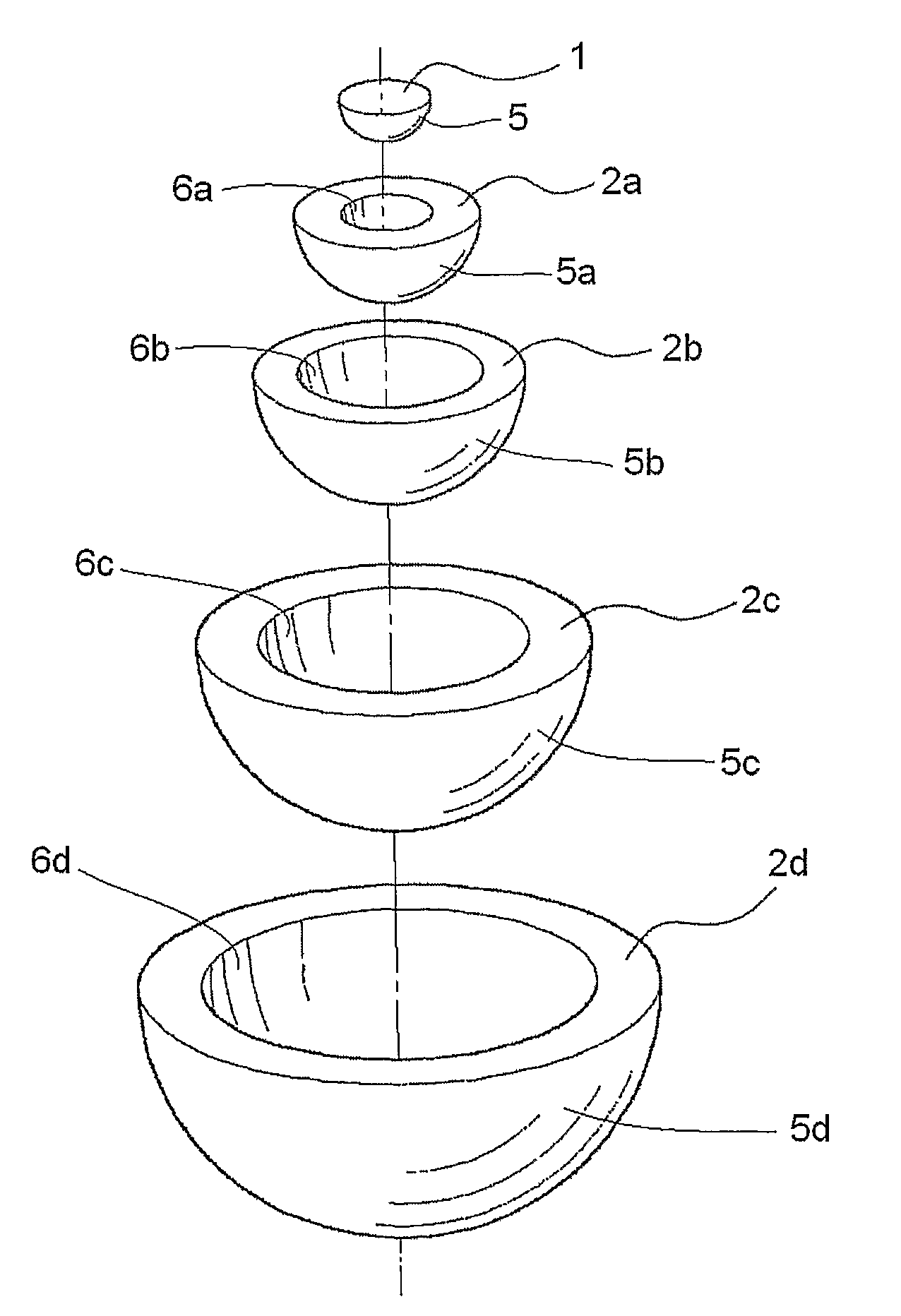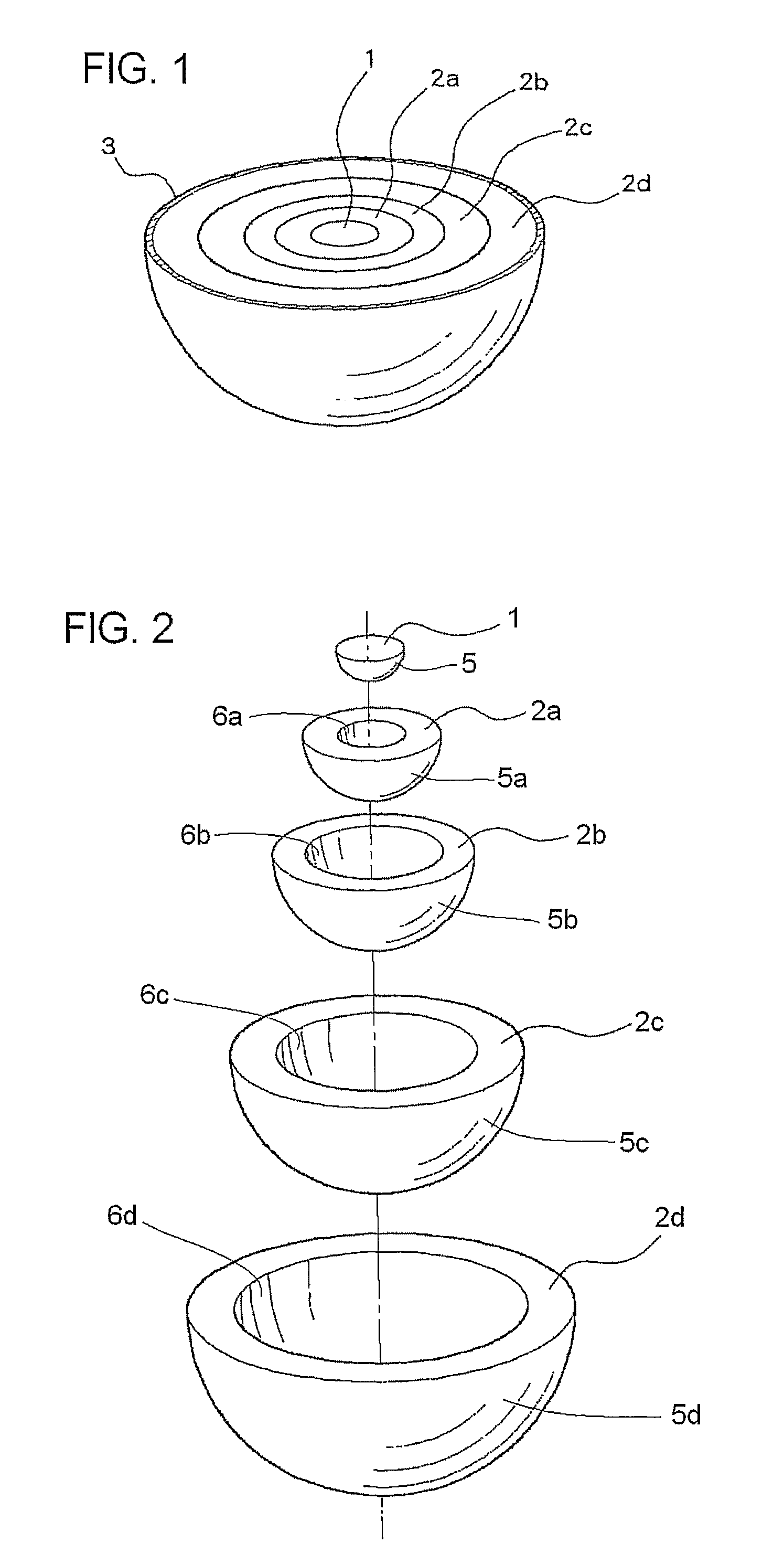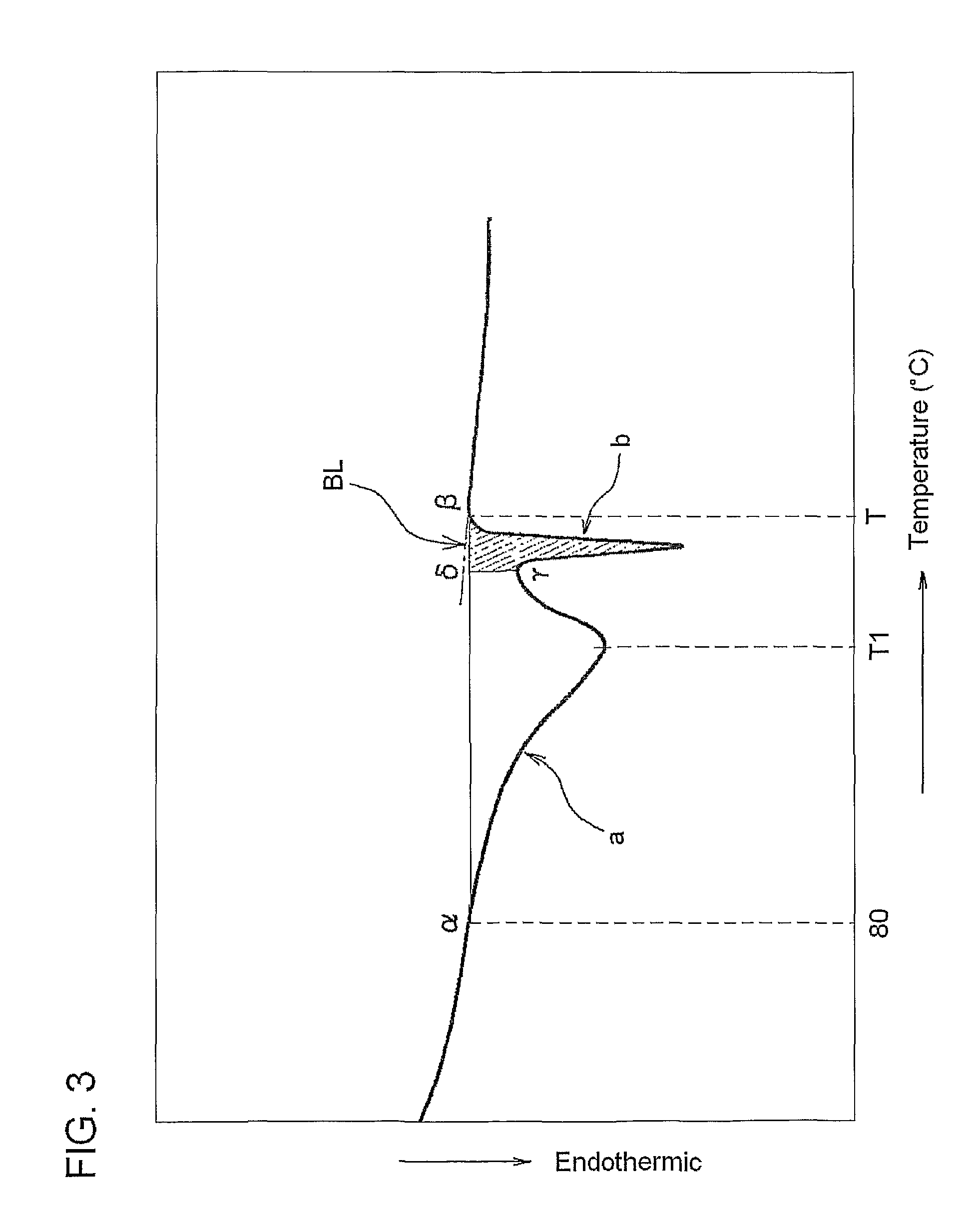Luneberg dielectric lens and method of producing same
a dielectric lens and dielectric technology, applied in the field of dielectric lenses, can solve the problems of insufficient performance, such as antenna gain, for practical use, and use of dielectric lenses, and achieve the effect of excellent antenna characteristics
- Summary
- Abstract
- Description
- Claims
- Application Information
AI Technical Summary
Benefits of technology
Problems solved by technology
Method used
Image
Examples
example 1
[0112]A dielectric lens having a diameter of 800 mm and composed of 13 layers was produced as shown in Table 3. In Table 3, “number of layers” indicates a total number of layers inclusive of a center layer and dome-shaped layers.
[0113]The dielectric constant ∈r of each layer of the dielectric lens should be adjusted on the basis of the above-described theoretical formula (1). Thus, the content of a ceramic material and the apparent density of a molding of the expanded beads of each layer were adjusted. For the purpose of adjusting the apparent density with high accuracy, two kinds of resin particles (Resin Particles 1-1 and 1-2) were prepared and were foamed and expanded by the dispersion method under various conditions to obtain seven kinds of expanded beads (Expanded Beads 1-1 to 1-7). The expanded beads were classified to obtain 13 kinds of expanded beads having varying apparent densities for the fabrication of the 13 layers of the dielectric lens. Details of the preparation of t...
example 2
[0129]A dielectric lens having a diameter of 370 mm and composed of 8 layers was produced as shown in Table 3. Two kinds of resin particles (Resin Particles 2-1 and 2-2) were prepared and were foamed and expanded by the dispersion method under various conditions to obtain six (6) kinds of expanded beads (Expanded Beads 2-1 to 2-6). The expanded beads were classified to obtain eight (8) kinds of expanded beads having varying apparent densities for the fabrication of the 8 layers of the dielectric lens. Detailed procedures are as follows.
Preparation of Resin Particles:
[0130]Resins (Resin 1 and Resin 3) shown in Table 1 and ceramic (Cer 2) shown in Table 2 were blended in the proportion shown in Table 7. Each blend was kneaded in a two-axis extruder, extruded and pelletized to obtain Resin Particles 2-1 and 2-2 in the form of columnar particles. The maleic anhydride contents of Resin Particles 2-1 and 2-2 are shown in Table 7.
[0131]
TABLE 7MaleicCeramicsanhydrideResinAmountPolypropylene...
example 3
[0139]A dielectric lens having a diameter of 450 mm and composed of 8 layers was produced as shown in Table 3. The same eight (8) kinds of expanded beads having varying apparent densities as used in Example 2 were used for the fabrication of the 8 layers of the dielectric lens in Example 3.
Preparation of Moldings of Expanded Beads:
[0140]Each of the 8 kinds of expanded beads were placed in a pressurized tank having an inside pressure shown in Table 10 for 48 hours so that the expanded beads had the same inside pressure as the inside pressure of the tank. The 8 kinds of the expanded beads having the increased inside pressure were filled in respective molds, to which steam having the pressure shown in Table 10 was fed for fuse-bonding the beads together. The molds were then cooled to obtain 8 moldings of the expanded beads. One of moldings was a hemispherical layer for use as the innermost, 1st layer of the dielectric lens, while the other moldings were hemispherical dome-like shells f...
PUM
| Property | Measurement | Unit |
|---|---|---|
| apparent density | aaaaa | aaaaa |
| length | aaaaa | aaaaa |
| diameter | aaaaa | aaaaa |
Abstract
Description
Claims
Application Information
 Login to View More
Login to View More - R&D
- Intellectual Property
- Life Sciences
- Materials
- Tech Scout
- Unparalleled Data Quality
- Higher Quality Content
- 60% Fewer Hallucinations
Browse by: Latest US Patents, China's latest patents, Technical Efficacy Thesaurus, Application Domain, Technology Topic, Popular Technical Reports.
© 2025 PatSnap. All rights reserved.Legal|Privacy policy|Modern Slavery Act Transparency Statement|Sitemap|About US| Contact US: help@patsnap.com



